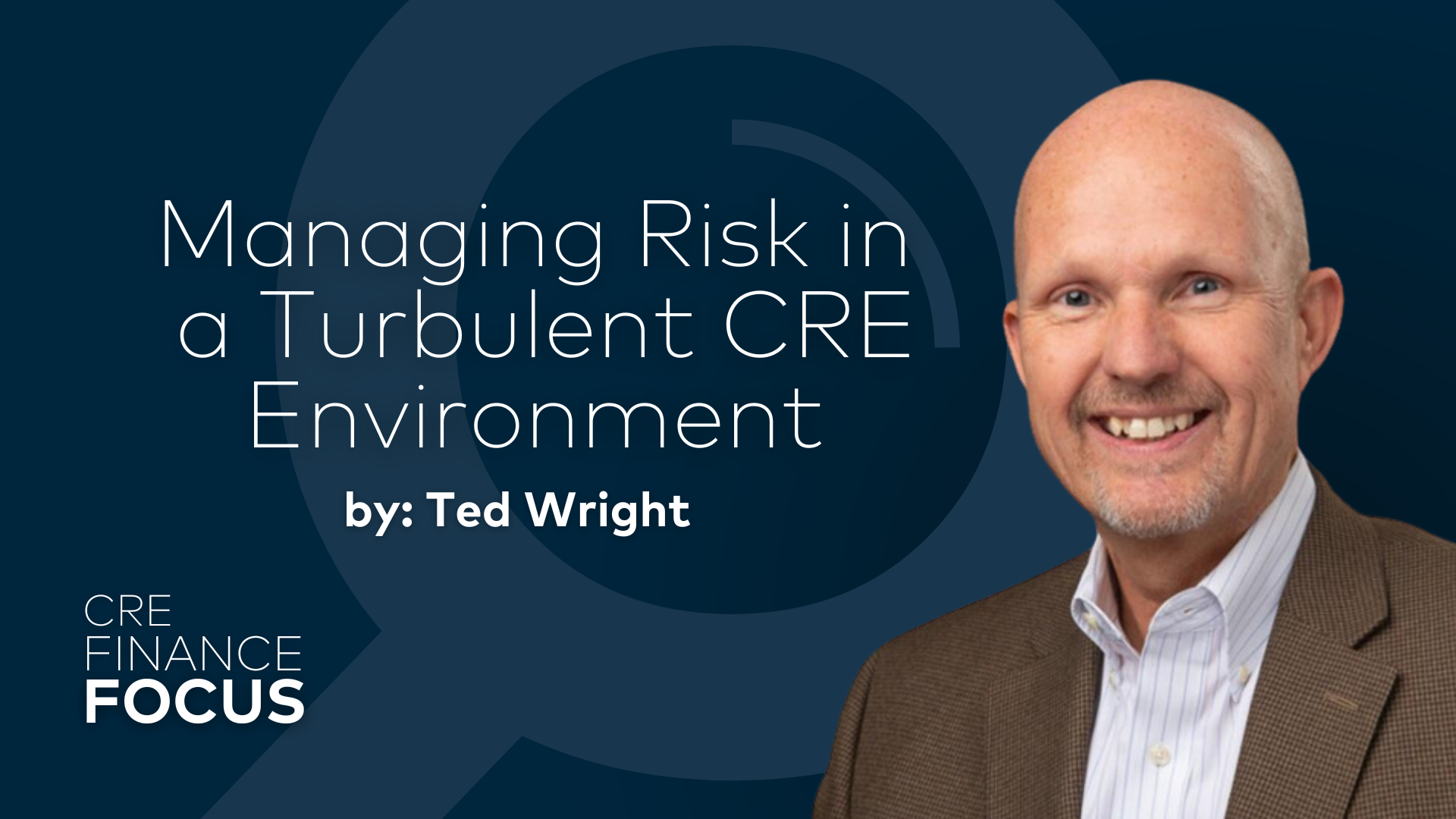
By Ted Wright
Executive Managing Director, Americas
In today’s ever-changing Commercial Real Estate (CRE) market, turbulence is a defining characteristic. Whether driven by economic shifts, global pandemics, inflationary pressures, rising insurance costs, or elevated interest rates, the CRE market is subject to a variety of risks and thus predicting the future market trajectory is not just an art, but a vital strategic necessity. In this context, it’s important to rely on concrete data. While having a forward-looking view is critical for success, the current turbulence in the CRE sector emphasizes the necessity of not letting future aspirations overshadow the reality reflected in the data.
The first step in managing risk is understanding the types of risks that the CRE market faces. These can be broadly categorized into market risks, credit risks, operational risks, and environmental risks. Underwriting in CRE involves making informed risk assessments about how an asset will perform, considering both its status and any potential changes on the horizon. However, the task of forming these assumptions becomes particularly challenging in volatile markets, where information can be scarce or contradictory. Lenders’ approaches to developing these views can vary widely, influenced by their internal structures, capitalization, and strategic goals. While some may adopt a conservative stance to try to minimize immediate losses, others choose aggressive strategies to avoid any devaluation of their positions, even at the risk of significant future losses.
Next, it’s critical to assess the macro market and its impact on the CRE sector. The current climate, characterized by elevated interest rates, has created debt service coverage issues across numerous asset classes, causing the market to stall as the market adjusts to the new capitalization rate environment. This uncertainty raises several important questions for CRE managers, including the duration of high-interest rates, the potential for increased cap rates to impact valuations adversely, and the future liquidity of the market. These factors compel managers to make tough decisions: whether to retain assets in the hope of market improvement, or to liquidate them preemptively ahead of a potential surge in distressed sales and further value erosion.
The most adept firms strike a balance, integrating market facts and milestones into their projections, while remaining agile enough to adjust these views as new information emerges. This balanced approach is undeniably more effective than clinging to outdated models or operating without any strategic perspective.
Finally, historical precedents offer valuable lessons. During the GFC, the quick recovery of the market rewarded those who held onto their assets, in contrast to the prolonged downturn of the 1990s, which favored early exits. These examples illustrate the varied outcomes of past cycles and highlight the importance of strategic flexibility.
For lenders, the current market demands a careful assessment of the likely trajectory of this cycle and its implications for their portfolios. The most successful will be those who ground their business plans in objective facts, sourced from neutral parties unburdened by past biases. Access to accurate data and the ability to manage positions effectively will be key determinants of who thrives in the face of current challenges.
Navigating the turbulent waters of today’s CRE market requires a balanced approach that combines a clear-eyed view of the market with a deep understanding of the facts. By adopting strategies that are both informed by the latest data and adaptable to changing conditions, CRE professionals can manage risk effectively and position themselves for long-term success, regardless of the market’s direction.
Ted Wright, Executive Managing Director of the Americas at Trimont, has over 30 years of commercial real estate finance experience including oversight of highly structured public/private debt including construction, A/B participations, mezzanine, and preferred equity positions.
CRE Finance Focus is Trimont’s bi-weekly LinkedIn newsletter delivering distinct perspectives on the most pressing topics of today from industry experts. Keep your finger on the pulse of the #CRE market and subscribe today.
If you have questions related to managing risk at your firm, contact us at info@trimont.com.
Have questions or topics you would like to see covered? Submit them here.

About Trimont LLC
Trimont (www.trimont.com) is a specialized global commercial real estate loan services provider and partner for lenders seeking the infrastructure and capabilities needed to help them scale their business and make informed, effective decisions related to the deployment, management and administration of commercial real estate secured credit.
Data-driven, collaborative, and focused on commercial real estate, Trimont brings a distinctive mix of intelligent loan analysis, responsive communications, and unmatched administrative capabilities to clients seeking cost-effective solutions at scale.
Founded in 1988 and headquartered in Atlanta, Trimont’s team of 400+ employees serves a global client base from offices in Atlanta, Dallas, Kansas City, London, New York and Sydney. The firm currently has USD 236B in loans under management and serves clients with assets in 72 countries.